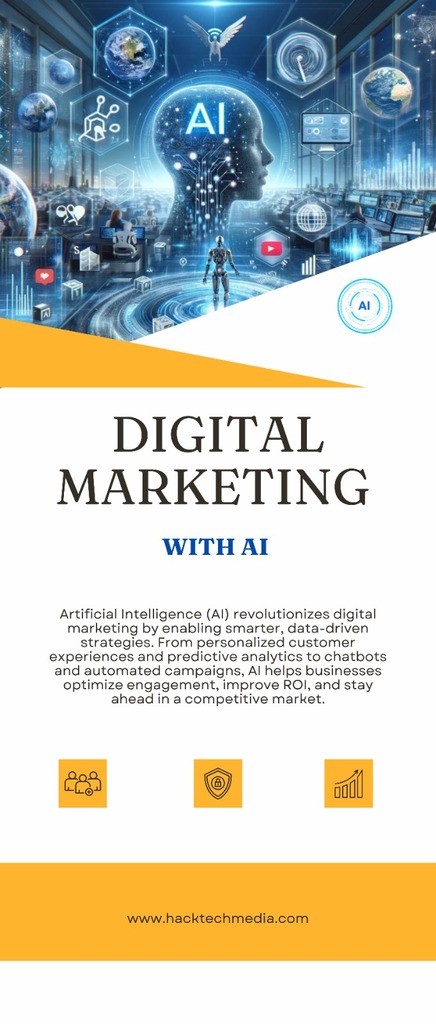
In today’s fast-paced digital world, staying ahead requires more than traditional business tactics.
Digital transformation provides a structured approach for organizations to adapt and grow.
A successful strategy integrates technology adoption, customer focus, and agile principles to foster resilience.
Businesses that embrace digital transformation not only streamline their processes but also cultivate a culture of innovation.
This alignment supports long-term growth and equips organizations to respond to evolving industry trends.
Understanding Digital Transformation and Its Importance
Digital transformation goes beyond technology—it’s a shift in organizational culture.
When integrated thoughtfully, it optimizes resources, drives efficiency, and creates a sustainable advantage.
By harnessing new technologies, companies can adapt faster, allowing them to stay relevant in a changing market.
A well-executed digital strategy sets a solid foundation, equipping businesses to outperform competitors.
Key Business Strategies for a Successful Digital Transformation
Effective digital transformation demands a strong business strategy.
Key elements include technology adoption, process optimization, and customer-centric innovations.
These strategies foster a robust competitive edge, enabling businesses to achieve sustainable growth.
By focusing on process improvements and technological advancements, organizations can outpace their competitors.
Technology Adoption as a Competitive Lever
Early adoption of new technology can differentiate a brand in the market.
Leveraging innovations like artificial intelligence, machine learning, and IoT enhances efficiency and customer interaction.
This technological edge allows companies to stand out, offering more tailored and timely solutions.
As a result, businesses can respond to market shifts with greater agility and accuracy.
Process Optimization to Maximize Efficiency
Process optimization reduces redundancies and streamlines operations.
Digital tools help automate repetitive tasks, freeing up resources for strategic growth.
Enhanced efficiency leads to lower operational costs and improved productivity.
These improvements position companies as lean and responsive, further boosting their competitiveness.
Enhancing Customer Experience Through Digital Transformation
Customer experience is a key differentiator in today’s market.
Digital transformation empowers businesses to engage with customers meaningfully and proactively.
Personalized services, available through advanced data insights, improve customer satisfaction and loyalty.
These improvements not only elevate brand perception but also increase customer retention rates.
Data-Driven Insights for Better Customer Understanding
Data analytics enables businesses to understand customer needs and behaviors more accurately.
With real-time insights, companies can create tailored experiences, enhancing the customer journey.
These insights allow businesses to address customer pain points effectively, fostering loyalty and trust.
Agile Methodology and Its Role in Digital Transformation

Agility in digital transformation allows organizations to adapt swiftly to changes.
By fostering a flexible approach, companies can make iterative improvements that align with market demands.
Agile methodology empowers teams to respond to challenges with resilience, maintaining relevance.
Implementing Agile for Swift Organizational Change
Agile practices prioritize adaptability, enabling teams to respond to new demands quickly.
This approach supports a responsive culture where innovation thrives and challenges are met confidently.
For organizations, agile methodologies facilitate seamless digital transformation, accelerating growth.
Managing Organizational Change to Drive Digital Innovation
Change management is crucial in guiding teams through digital transformation.
When leaders support continuous learning, employees are better prepared to adopt new technologies.
Effective change management fosters a culture open to innovation, essential for successful digital evolution.
Leveraging Industry Trends in Digital Transformation for a Competitive Edge
Staying informed of industry trends enables businesses to refine their digital transformation strategies.
By monitoring changes, companies can align their strategies with market expectations, staying relevant.
Leveraging trends like cloud computing, artificial intelligence, and big data allows organizations to strengthen their market position.
Leveraging Industry Trends in Digital Transformation for a Competitive Edge
Keeping pace with industry trends is essential for maintaining a competitive advantage in a rapidly evolving market.
Digital transformation is heavily influenced by technological advancements, including artificial intelligence, cloud computing, and big data analytics.
When businesses stay updated on these trends, they can integrate relevant technologies and strategies that support growth and efficiency.
For instance, the adoption of AI and machine learning enables companies to streamline data analysis, automate processes, and offer personalized services.
Similarly, cloud-based solutions allow for flexible data storage and scalability, making operations more efficient and accessible.
By continually adapting to trends, businesses remain aligned with customer expectations and can provide high-value services that differentiate them from competitors.
Incorporating industry trends also demonstrates a commitment to innovation and responsiveness, traits that attract both customers and talented employees.
This awareness ensures businesses remain resilient in the face of change and are well-positioned to capitalize on new opportunities.
Building a Future-Proof Digital Transformation Roadmap
Creating a digital transformation roadmap is critical for long-term success.
This roadmap outlines clear steps for implementing and scaling digital initiatives while aligning with business objectives.
By developing a structured plan, organizations can tackle digital transformation in manageable phases, which helps prevent overwhelm and ensures consistent progress.
Key elements of a successful roadmap include identifying priority areas, setting measurable goals, and allocating resources strategically.
For instance, a company may begin by focusing on digital tools that enhance customer experience or streamline core operations.
As the organization grows more digitally mature, it can shift focus to more advanced technologies, like AI-driven analytics or Internet of Things (IoT) applications.
A future-proof roadmap also includes provisions for ongoing training and development, ensuring that employees are prepared to adapt to technological advancements.
When employees are well-equipped to use new tools, digital initiatives are more likely to succeed.
Regular performance reviews, along with feedback loops, help keep the roadmap aligned with the evolving needs of the business and its customers.
Measuring the Impact of Digital Transformation
To truly benefit from digital transformation, companies must track their progress through measurable key performance indicators (KPIs).
These metrics provide valuable insights into the effectiveness of digital initiatives, helping organizations identify what’s working and where improvements are needed.
Typical KPIs include customer satisfaction scores, operational efficiency metrics, and cost savings from process optimizations.
For customer experience, companies might track customer retention rates, net promoter scores (NPS), or the frequency of repeat purchases.
On the operational side, metrics like production times, error rates, and overall productivity help gauge the impact of technology adoption on efficiency.
Using data analytics tools, businesses can transform these insights into actionable strategies, enabling continuous improvement.
Setting benchmarks and periodically evaluating KPIs ensure that the organization stays on track and maximizes its return on digital investments.
Cultivating a Culture of Continuous Innovation
An essential component of successful digital transformation is fostering a culture of continuous innovation.
When employees are encouraged to experiment with new ideas and take calculated risks, businesses are more adaptable and resilient.
This culture of innovation promotes agility, enabling organizations to swiftly respond to shifts in technology and customer preferences.
Leadership plays a crucial role in shaping this culture by supporting creative thinking and empowering employees at all levels to contribute to transformation initiatives.
Encouraging cross-functional collaboration also enhances innovation by bringing diverse perspectives together to solve complex challenges.
Investing in research and development (R&D) is another key factor that drives continuous innovation.
By staying on the cutting edge of industry advancements, organizations are better positioned to incorporate new technologies into their strategy.
When combined with a commitment to ongoing learning, these efforts build a dynamic and future-ready organization.
Digital Transformation and Competitive Resilience
As industries continue to evolve, resilience becomes a critical measure of success.
Digital transformation strengthens an organization’s ability to adapt, making it resilient to disruptive events and emerging competition.
A resilient business can quickly pivot its strategies in response to external factors, such as economic shifts or technological breakthroughs.
For example, during a crisis, digitally mature companies are better equipped to transition to remote work, maintain customer engagement, and reconfigure supply chains.
This agility allows businesses to sustain operations and continue delivering value, even in challenging circumstances.
Competitive resilience also means leveraging data to anticipate trends and adapt before they affect business operations.
Data analytics tools, along with AI-driven insights, give companies a forward-looking perspective that supports proactive decision-making.
Through this digital lens, organizations can navigate complex markets and sustain a competitive advantage, regardless of the challenges they face.
Final Thoughts: Embracing Digital Transformation for Lasting Success
Digital transformation is a powerful driver of business success, offering opportunities to refine processes, enhance customer experiences, and foster innovation.
Companies that commit to a well-rounded digital strategy position themselves to thrive in a competitive landscape and adapt to the future with confidence.
As businesses embark on this journey, it’s essential to view digital transformation as an ongoing process rather than a one-time project.
Continuous evaluation, learning, and adaptation allow organizations to stay relevant and responsive to technological advancements and customer expectations.
By leveraging technology, cultivating a culture of innovation, and aligning efforts with strategic objectives, companies can achieve not only a competitive edge but also sustainable growth.
Ultimately, a thoughtful digital transformation strategy empowers organizations to reach new heights, create lasting value, and drive success well into the future.
Conclusion
Digital transformation is no longer a choice—it’s a necessity for businesses aiming to thrive in a competitive landscape.
By embracing technology adoption, process optimization, customer-centric strategies, and agile methodologies, companies can build a solid foundation for growth.
Effective change management and a focus on industry trends further solidify an organization’s ability to adapt and excel.
Businesses that invest in digital transformation not only gain operational efficiency but also foster a culture of innovation.
These strategies enable them to deliver outstanding customer experiences and respond swiftly to market demands.
Ultimately, a well-planned digital transformation strategy equips businesses with the tools needed to achieve long-term success and remain competitive in an increasingly digital world.
Written By – Seema Kanojiya







